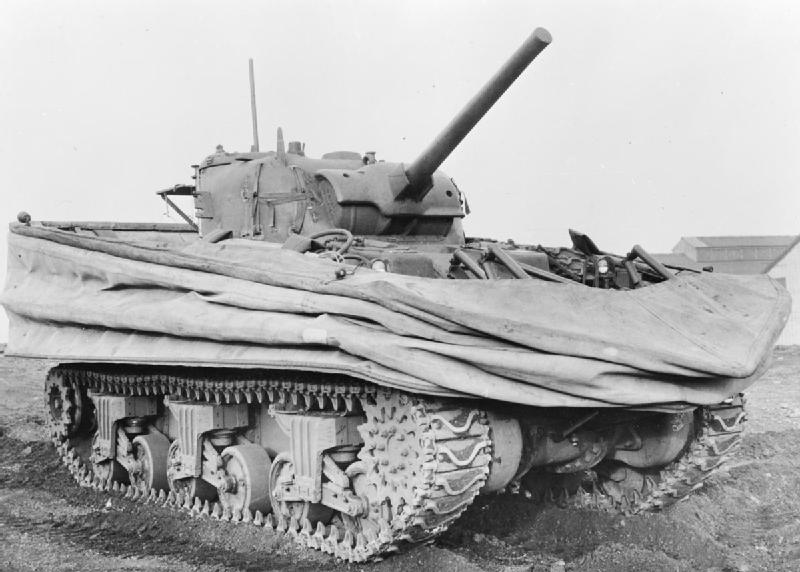 I don't know anything about the use of the "swim tanks", but that certainly adds another dimension to a water borne assult on a base!
I don't know anything about the use of the "swim tanks", but that certainly adds another dimension to a water borne assult on a base!
For the Normandy landings, a modification was made to the Shermans intended to hit the beaches with the first wave to allow the tanks to 'swim' ashore. The problem is that the design of the mod was intended only for calm waters and couldn't really withstand light or heavy seas. Unfortunately, for the Shermans designated to land at Omaha, the seas were heavy with 5ft to 6ft waves and because of the intense fire, most of the LST crews let the Shermans off to far from the shore, basically dropping them off in deep water. The tanks soon became swamped and most of them sunk, with a lot of loss amongst the crews.
The British and Canadians had better luck with the Sherman DDs at Juno, Sword and Gold Beach because of the lighter seas and the LST crews dropped the Sherman DD tanks closer to shore in shallow waters. On each British/Canadian invasion beach, the DD tanks were instrumental in breaking up German defenses.
Sherman DD tanks crossing the Rhine

Sherman DD tanks with the skirt down

Sherman DD with the skirt up

Sherman DD 'swimming' off the Isle of Wright during D-Day training exercise

British Sherman DD tanks landing at Juno

The Allies weren't the only ones working on DD tanks, the Germans also saw the need for DD tanks to support amphibious assaults.
The Tauchpanzer III

Instead of 'swimming' on the surface like the Sherman DD tanks, the Tauchpanzer III was outfitted with a snorkel and was intended to drive to shore on the sea bed with a maximum depth of 50ft. It was a modified Panzer III.
ack-ack